UK
The Northallerton man who was a 1960s pioneer of the electric car
Chris Lloyd
Fri, 3 March 2023

The Ford Comuta which was an electric prototype developed around 1967 in competition with the Carter Coaster
By 2030, all new cars sold in Britain will have to be electric, although if the nation had listened to a former leader of Northallerton Urban District Council in the 1960s, we would all already be switched on to green vehicles.
He was Alastair Carter, who grew up with his parents at Castle Hills Farm – they had a 1930s band called the Swingtimers, which sounds a little dubious today – and he went to Applegarth School.
He joined the RAF and flew bombers during the Second World War, and in peacetime he became a councillor and even council leader.
But early in the 1960s, Mr Carter gave it all up in Northallerton and moved to Tamworth, in Staffordshire, where he started a motoring and engineering business. He regained his pilot’s licence and would fly himself about the country on business making sure his flightpaths took him over the sites of rivals, like Ford at Dagenham.

Former president Donald Trump driving an electric golf buggy on his golf course at the Trump Turnberry resort in South Ayrshire - this buggy is apparently based on the Carter Coaster, a pioneering electric vehicle designed by a Northallerton man
Former president Donald Trump driving an electric golf buggy on his golf course at the Trump Turnberry resort in South Ayrshire - this buggy is apparently based on the Carter Coaster, a pioneering electric vehicle designed by a Northallerton man
Ford was pioneering a small, electric car, the Comuta, which looks like a cube on wheels.
So Mr Carter designed the Carter Coaster, which looked like a flat suitcase on wheels. It was slightly bigger than the Comuta in that it could seat two people side-by-side in a glass bubble perched on top of the suitcase.
His design featured a revolutionary “regenerative braking” system whereby the kinetic energy released by slowing the car down was pumped back into the battery.
In 1967, a short film on ground-breaking electric cars featured both the Comuta and the Carter Coaster. “Without about five years, Mr Carter expects to see a quarter-of-a-million on Britain’s roads,” said the narrator.
But only two Ford Comutas were ever built, and the Carter Coaster never took off. But it is believed that Mr Carter emigrated to the US where the Coaster became the basis for the electric golf buggy, and Mr Carter became extremely successful.
Can you tell us anything about Mr Carter and his Coaster? Please email chris.lloyd@nne.co.uk
UK
Tens of thousands of elderly people have died without getting the care they need, charity says
Fri, 3 March 2023
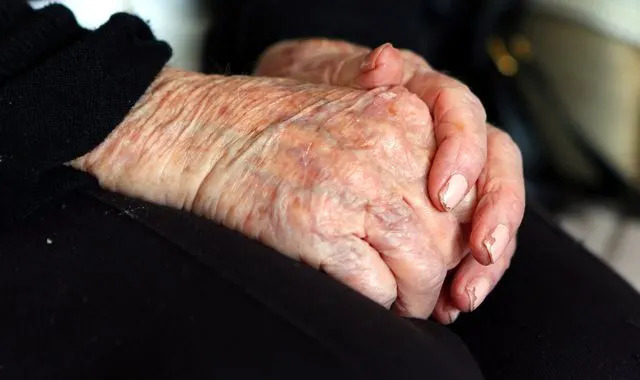
Tens of thousands of elderly people have died without getting the care they need, according to a charity which is calling for more social care resources.
Age UK cited NHS Digital figures for England which show there were 28,890 support requests for people aged 65 and over in 2021/22 where the person died without any of those services being provided.
The charity said that equates to more than 500 deaths a week - more than 70 a day.
Age UK director Caroline Abrahams said: "There isn't enough social care to go round and so some older people are waiting endlessly for help they badly need.
"It is heartbreaking that on the latest figures, more than 500 older people a week are going to their graves without ever receiving the care and support to which they were entitled.
"Nor can the blame for this parlous situation be placed on the pandemic, for while it certainly didn't help, social care services were struggling to secure enough staff and funding in the years preceding it.
"Since then, all the evidence is that the position has not got any better and, on most measures, has continued to get worse."
Ms Abrahams said long waits for social care cause "huge distress to older people" and place "intolerable pressure on their families".
Read more:
Weak link of social care is taking UK's health sector to breaking point
Care home capacity in UK shrinks for first time in three years
The charity has written to Chancellor Jeremy Hunt saying: "When you were chair of the health and social care committee, you expressed deep regret at being unable to fix the problems faced by social care during your time as secretary of state.
"Now, as chancellor, the Spring Budget is your opportunity to help the millions of older people, often unheard and feeling ignored, who are waiting for good, reliable care and support to live with dignity."
A Department of Health and Social Care spokesperson said: "Everyone should have access to good quality social care when they need it, and our thoughts are with all those who have lost elderly relatives and loved ones.
"We are providing up to £7.5m in funding available over the next two years to support adult social care.
"This will put the adult social care system on a stronger financial footing and help local authorities address waiting lists, low fee rates, and workforce pressures in the sector.
"We are also tackling workforce pressures by promoting careers in adult social care through our annual domestic recruitment campaign and by investing £15m to increase international recruitment of care workers."
UK
Gone Fishing's Paul Whitehouse meets sewage campaigners in hard-hitting documentary
Miranda Norris
Sat, 4 March 2023
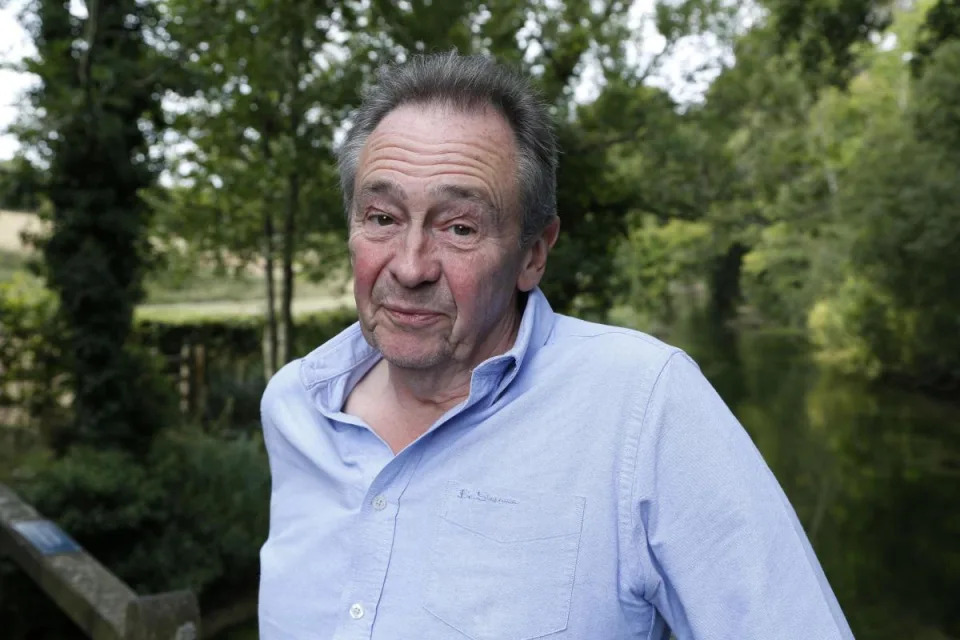
Paul Whitehouse (Image: BBC)
Witney sewage campaigners feature in a hard-hitting documentary by comedian and keen angler Paul Whitehouse.
Paul, who has starred in Gone Fishing with fellow comedian Bob Mortimer since 2018, sets out to discover whether the water companies are illegally discharging untreated sewage into our waterways to cut corners and protect profits.
In Our Troubled Rivers, he learns that firms are ignoring the regulations to only discharge sewage during heavy rainfall.
In episode one, he meets the founders of Windrush Against Sewage Pollution (WASP), retired maths professor Peter Hammond and ex-police officer Ashley Smith who are trying to hold the water firms to account.
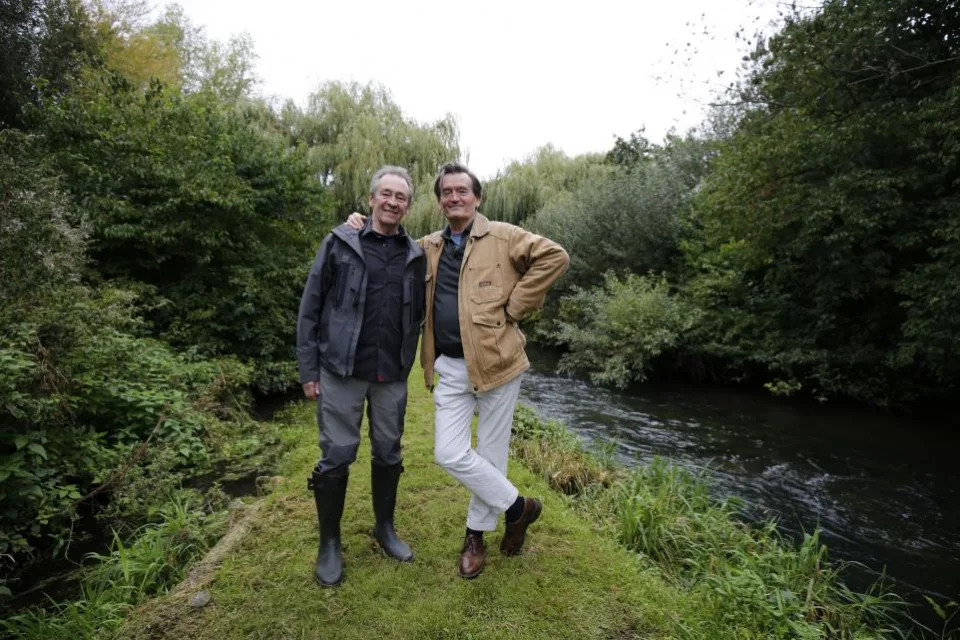
Oxford Mail:
A group of volunteers, they investigate the pollution of the River Windrush and her sister rivers.
They collect and analyse information on water quality and sewage discharges.
In 2020, Thames Water reported spilling untreated sewage for 3,644 hours on 228 occasions from four of the sewage works on the River Windrush.
Without the work of WASP, the scale of the pollution in the Windrush Valley would have stayed hidden.
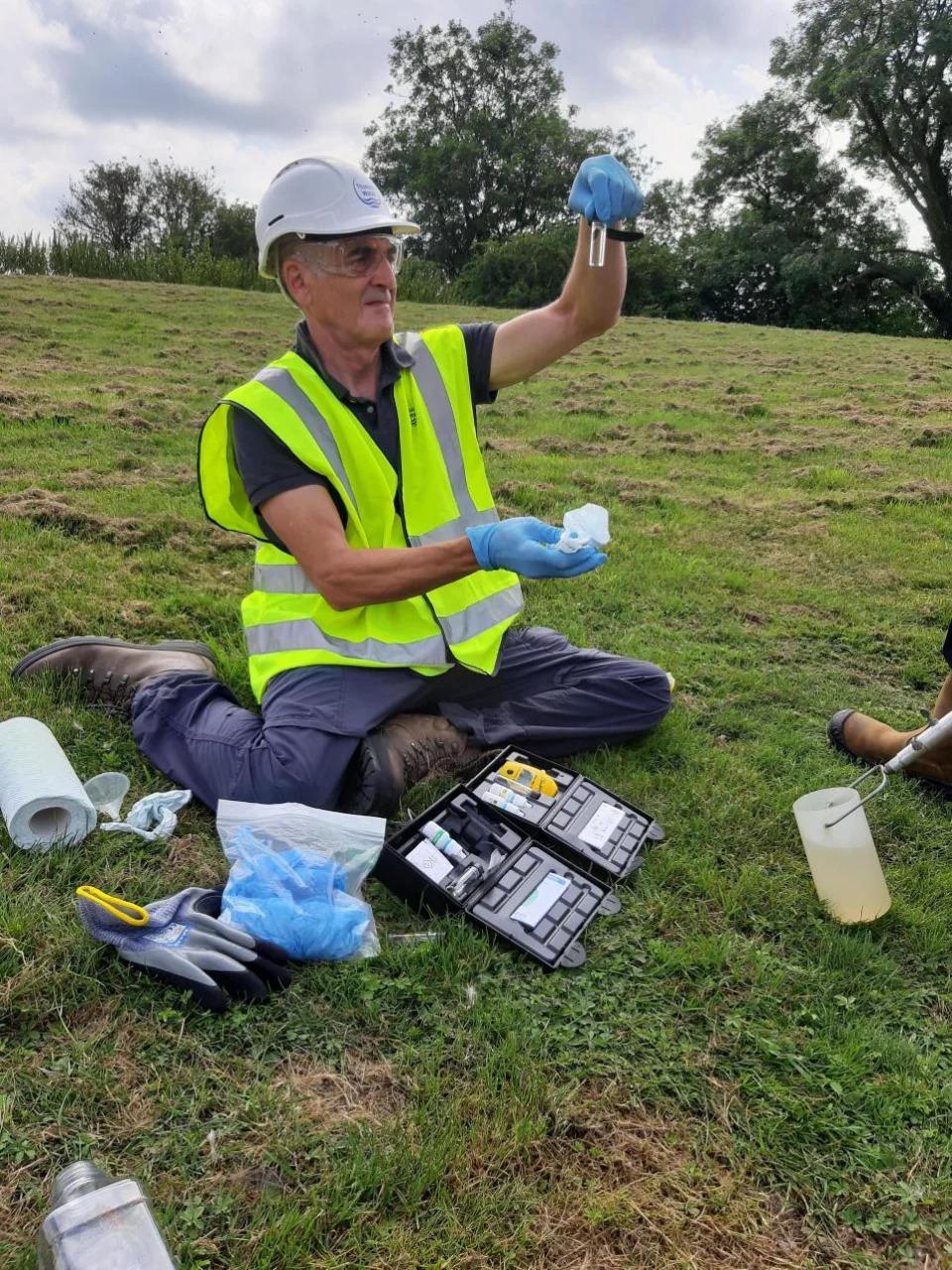
And as this is happening to rivers across the country Ash Smith has become an influential voice on the subject nationwide.
He was also instrumental in pressuring Thames Water to produce an interactive map providing near real-time information about its storm overflow activity.
In the documentary, the duo say the claim that raw sewage is only discharged during stormy conditions is “complete rubbish”.
Ash Smith claims that since 1989, £72billion has gone from the industry, mostly to stakeholders in China, Canada and Abu Dhabi.
They say they believe that the solution is to return the firms to public ownership.
Paul, 64, also meets pop star-turned-campaigner Feargal Sharkey in the show,
He has raised concerns about sewage pollution from Thames Water's Sewage Treatment Works at Church Hanborough contaminating bathing waters at Port Meadow in Oxford.
Paul says: “I still find it astonishing that the water companies would put untreated sewage into our rivers.”
And he meets Mark Barrow who shows him a collection of wet wipes and sanitary products he has collected from the River Wharfe in Yorkshire.
Paul tells him: “You wouldn’t get me in there, not in a million years.
“Oh my God. It’s liquid death. That is deeply unpleasant.
"It’s obvious that if you show that to people they’ll be appalled.
"It defies belief.”
Paul Whitehouse: Our Troubled Rivers, Sunday, BBC2, 8pm
Women's rugby 7s team shares the same stage as men for first time in regular Canada tournament
Fri, March 3, 2023

Ireland's Stacey Flood, front right, fights off Canada's Alysha Corrigan, left, as Olivia De Couvreur, right, tackles her during HSBC Canada Sevens women's rugby action in Vancouver on Friday, March 3, 2023. (Darryl Dyck/The Canadian Press - image credit)
For the first time in the history of Vancouver's Rugby Sevens tournament, women are sharing the same stage as their male counterparts, with the event at full capacity.
Canada Sevens is part of a multi-city set of tournaments around the world. In past years, the men's side has played its Canadian games in Vancouver, while the women played on Vancouver Island.
In 2021, the men and women played in the same venue, but the tournament was scaled back due to the COVID-19 pandemic.
This year, both the men and women are playing at B.C. Place in Vancouver, and the tournament is back to full size, offering both sides access to the same size crowds.

Darryl Dyck/The Canadian Press
"It's how it should be," said Rugby Canada's managing director of revenue and fan engagement, Jamie Levchuk.
"We're proud to be a part of it."
Team captain Olivia Apps said it's a good opportunity for her teammates to play in front of a bigger crowd on the same stage as the men's teams.
"I think it's a really great representation of the growth of rugby sevens and the equality of men's and women's sports internationally," said Olivia Apps, captain of Canada's Rugby Sevens senior women's team.

Murray Titus/CBC
Despite the team's 28-7 loss to Ireland on Friday, she said it was "amazing" to play in front of a home crowd.
Apps' teammate, Keyara Wardley, says being able to play at B.C. Place has been good exposure for the women's game in general.
"When I was growing up, I didn't really have that much rugby to look up to," she said.
"To see how much it's grown is really inspiring."
While it's a step forward as far as equality between men's and women's sports, Apps said there's still work to be done, particularly when it comes to being paid to play professionally here in Canada. She said those conversations need to include both rugby sevens and 15s.
"I think that that is a really big step that needs to be taken."
WATCH | The Canadian women's national rugby team tangles with Ireland in Vancouver
'A dire situation': Regina Symphony Orchestra at financial risk due to dwindling audiences
Fri, March 3, 2023
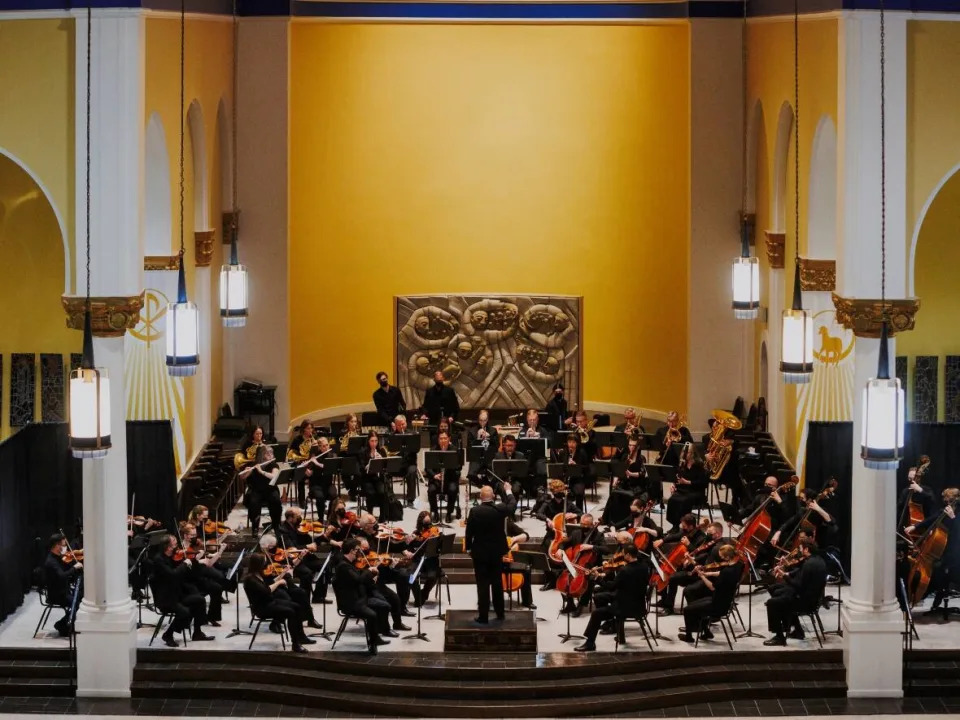
The Regina Symphony Orchestra performing at the Holy Rosary Cathedral. (Chris Graham - image credit)
Things are not looking good for the Regina Symphony Orchestra.
Audiences at RSO concerts have been much smaller than they were pre-pandemic — so much so that the orchestra has had to cancel three of its April shows, including one that was to feature a choir.
"This is sort of our plan to mitigate some of the financial risk that we are feeling very acutely," said Gordon Gerrard, musical director of the RSO.
"But I would say that if people don't start supporting us — both in terms of attending concerts and also if we don't find other means of support — then we are in a dire situation and we are at great risk, certainly."
At the beginning of the season in September, Gerrard says, the orchestra took a conservative view of ticket sales.
Even so, he said, "we haven't got anywhere close in terms of audience. We're seeing halls that are 20 per cent full, which, you know, just is heartbreaking for us."
"We know that we have lots of folks who love the RSO in our community, but we're just not seeing people returning in the way we expected."
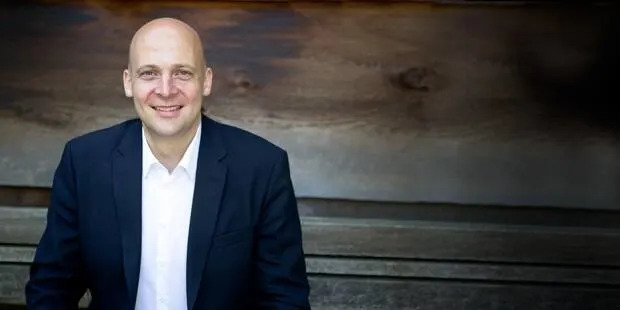
gordongerrard.com
Before the pandemic began, Gerrard says, the RSO could expect to fill 1,200 to 1,500 seats in the 1,900-seat Conexus Arts Centre.
"Now, we're seeing as low as 400 people so it's really a different world now, for sure. That much has become clear through the course of this season," Gerrard said
Gerrard says he believes the pandemic has changed people's habits, influencing many to stay home and get their entertainment online or through apps.
"I think we're now in a position where we need to change people's habits back," he said, "and to encourage people to come out to remind people what we can offer them."
That means the RSO will work to increase its social media presence and find new ways to reach potential audience members.
However, Gerrard added, low ticket sales are not just a problem in Regina.
"I do know that most of my colleagues across the country are experiencing what we're experiencing in that [there's] a huge downturn in ticket sales to the point where organizations are at risk," he said.
Saskatoon Symphony Orchestra sees uptick in sales
It's a different story in Saskatoon: The Saskatoon Symphony Orchestra is doing just fine, according to management.
Mark Turner, CEO and creative producer of the SSO, says ticket sales since September have exceeded their expectations.
"This year we are actually seeing a return to pre-pandemic levels, which has been really great for us. We've had a number of full sellouts of TCU Place and other venues … so we've been very fortunate," Turner said.

Julie Isaac Photography
The SSO is hosting a special Disney in concert program, featuring the music of Frozen, on March 18 at TCU Place. At first, Turner says, ticket sales for the event were slow, but now the production is on track to sell out.
"When we built this season, we were sort of rolling the dice — particularly, you know, we had two Disney shows. We had a big pop show [Dancing Queen] and those come at big price points, and so they were kind of calculated risks," Turner said.
The SSO scheduled that lineup with the assumption it would break even financially. Instead, it made a profit.
"We are seeing a lot of new people in our audience," Turner said. "When we live-streamed throughout the 2020/21 season, we were able to attract a different group of people — people who had been maybe symphony-curious but hadn't come out."
Over the weekend, Turner says, 25 per cent of an SSO concert audience of 1,300 were people under the age of 25.

Julie Isaac Photography
Montreal neo-Nazi found guilty of promoting hatred seeks appeal
Fri, March 3, 2023

Gabriel Sohier-Chaput, seen here at the Montreal courthouse last year, is seeking to appeal his guilty verdict. (Paul Chiasson/The Canadian Press - image credit)
A Montreal neo-Nazi who was found guilty of wilfully promoting hatred is seeking to appeal the verdict.
Gabriel Sohier-Chaput, 36, authored articles in a far-right publication under the pseudonym "Charles Zeiger." He was found guilty in the Court of Quebec on Jan. 23.
The case hinged on a single article written in 2017 for a far-right online publication, the Daily Stormer, which Sohier-Chaput claimed was satire.
Using antisemitic memes and editorial comments, the article entitled "Canada: Nazis Trigger Jews By Putting Up Posters On Ch--k Church," celebrated neo-Nazi posters pasted on a bus stop in British Columbia.
It also mocked a Holocaust survivor who had been interviewed about the incident, calling him an "oven-dodger," and called for "non-stop Nazism, everywhere, until the very streets are flooded with the tears of our enemies."
Sohier-Chaput's lawyer submitted his request for an appeal last week.
His lawyer wrote in the request that Judge Manlio Del Negro created an appearance of partiality in the courtroom.
The lawyer also claims the judge committed errors of fact and law in his analysis of Sohier-Chaput's credibility when he compared the accused to Machiavelli and implied that he had rallied his readers around the virus hatred. The lawyer said the judge didn't provide proof supporting that.
When Sohier-Chaput was found guilty, the judge described him as "extremely dangerous to the public" and ordered he be handcuffed immediately.
Sohier-Chaput is scheduled to be sentenced on May 11.
CRIMINAL COLONIALISM AND CAPITALI$MEight people arrested, charged in Norval Morrisseau art fraud investigation
Fri, March 3, 2023

Eight people have been arrested in an investigation into alleged fraudulent art sold for years under the name of famous Indigenous artist Norval Morrisseau, Ontario Provincial Police said Friday, noting some works were bought for tens of thousands of dollars.
More than 1,000 allegedly fake paintings, prints and other artworks were seized in the probe that has gone on for two and a half years, OPP said, adding they had worked closely with police in Thunder Bay, Ont.
"These are not small, victimless crimes," OPP Det. Insp. Kevin Veillieux said at a news conference. "These are people that took advantage of one man's legacy in order to turn a profit for themselves."
Morrisseau, also known as Copper Thunderbird, was a self-taught artist of Ojibwe ancestry who is considered a trailblazer for contemporary Indigenous artists across Canada.
Police have said allegations began to emerge of people creating and selling art under Morrisseau's name, and made in his distinctive Woodland School of Art style, before his death in 2007.
On Friday, OPP said one of the suspects arrested was "the architect" of a group in Thunder Bay that created the false paintings. Veillieux alleged that began around 1996.
The suspect forged some paintings himself before growing his organization into a full assembly line of painters, police said.
"(This suspect) orchestrated all aspects of this operation," said Veillieux.
"He was responsible for selling and consigning these fakes across Thunder Bay, Ontario and into Alberta, where they were then purchased by unsuspecting members of the public."
Another of the eight individuals charged also started a Thunder Bay-based group, this one around 2002, and recruited two Indigenous artists to create the fake artwork, one of whom was Morrisseau's nephew, said Veillieux.
The artwork was then often sold online to buyers around the world, police said.
A third group is alleged to have started around 2008, said Veillieux, operating in southern Ontario and allegedly providing false information regarding the authenticity and origin of the artworks.
"It was through technology and witness evidence that we have been able to identify much of the fraudulent art," said Veillieux.
Police said they made their arrests on Wednesday in Thunder Bay, Niagara-on-the-Lake, Simcoe County and a community near Markham.
Those arrested face a combined 40 charges, including forgery, defrauding the public over $5,000 and uttering a forged document.
"The arrests marked the dismantling of three distinct groups, groups that we believe exploited Mr. Morrisseau's name and his art legacy," Veillieux said.
Five of the eight suspects are residents of Thunder Bay, said Dan Taddeo, police chief of the northern Ontario city.
"The scope of this case is extraordinary," said Taddeo. "When the Thunder Bay Police Service began this investigation, we realized that it wasn't just local or even provincial or even national. It was international."
Morrisseau was from the Bingwi Neyaashi Anishinaabek, also known as Sand Point First Nation, and was the first Indigenous artist to have his artwork shown in a contemporary Canadian art gallery.
His official website said he was made a member of the Order of Canada in 1978 and was also awarded a posthumous lifetime achievement award in 2008.
"His contributions to Indigenous art and culture are incomparable," said OPP interim deputy commissioner Kari Dart. "These contributions and his global success may have made him an easy target for fraud."
In 2019, a Canadian musician was awarded tens of thousands of dollars by Ontario's top court, which said a Toronto gallery was deliberately elusive in proving the authenticity of a painting he purchased that was alleged to be done by Morrisseau. The Ontario Court of Appeal sided with Kevin Hearn, a member of the rock band the Barenaked Ladies, in his legal battle against the Maslak-McLeod Gallery and the estate of its late owner, Joseph McLeod.
This report by The Canadian Press was first published March 3, 2023.
Jessica Smith, The Canadian Press
Jordan's Principle explained: Canadian Human Rights Tribunal needed to make government accountable
Fri, March 3, 2023
“Jordan could not talk, yet people around the world heard his message. Jordan could not breathe on his own and yet he has given the breath of life to other children. Jordan could not walk, but he has taken steps that governments are now just learning to follow.” — Cindy Blackstock, executive director, First Nations Child & Family Caring Society
Jordan’s Principle is a child-first, needs-based approach named in memory of Jordan River Anderson, a First Nations boy from Norway House Cree First Nation in Winnipeg, Manitoba. Jordan was born with a rare multifaceted disorder and was hospitalized from birth. He died at the age of five, in the hospital, while provincial and federal jurisdictions argued for over two years and could not agree as to who was responsible for paying for his at-home care, services available to any other child in Canada without dispute.
Jordan’s Principle, a legal rule, ensures that First Nations children aged zero to 19 receive the same access to health, social and educational programs, services and supports as all other children in Canada.
In 2007, Jordan’s Principle received unanimous support in the House of Commons and was passed as legal rule. In the years following, from 2007 to 2016, the federal government did not adhere to the ruling and Indigenous children were unable to receive assistance through Jordan’s Principle. In 2016, the Canadian Human Rights Tribunal ruled in favour of First Nations children and ordered Canada to immediately do the following: cease its discriminatory practices regarding First Nations child welfare, reform the First Nations child welfare program, cease applying a narrow definition of Jordan’s Principle and take measures to implement the full meaning and scope of Jordan’s Principle for all First Nations children living on or off reserve.
Jordan’s Principle has created positive, transformative change, but the government’s implementation of the tribunal’s orders has been inadequate, including service gaps, delays and denials; these shortcomings seriously impact Indigenous children with disabilities and special needs. The level of service provided by the province or territory is the minimum standard. Service supports under Jordan’s Principle are based on what the child needs, not what the province or territory normally offers. The province normally delivers health care “off reserve,” while the federal government funds health care “on reserve.”
Despite changes to child welfare, First Nations children continue to face systematic barriers when it comes to education, health and social supports. The fact that Jordan had to be put in the child welfare system to be considered for services is tragic. Jordan’s Principle ensures that Indigenous children receive the care and support they need, at home.
Requests are based on the needs of the child on a “substantive equality basis.” Substantive equality means that First Nations children may need services and supports above what is ordinarily provided by the provinces and territories. The tribunal ruled that substantive equality is needed to address the impacts of Canada’s colonial history and discrimination against Indigenous peoples.
First Nations children on and off reserve experience challenges and barriers accessing care and services. Many First Nations communities do not have early intervention services available, impacting the development of a child with special needs. A 2013 study by Woodgate noted, “First Nations families have unique perspectives of disability and are more focused on what children with disabilities can do, and not what they are unable (to do).”
Research indicates there are disabling environments both on and off reserve, conditions or barriers that prevent families from having a life, which include structural (infrastructure, physical environments, transportation), social (lack of disability awareness), economic (poverty) and other barriers due to historical trauma and colonialism. Services and supports received through Jordan’s Principle should not be regarded as benefits but rather rights under the orders of the Canadian Human Rights Tribunal.
Jordan’s Principle is included as the third of the 94 Calls to Action from the Truth and Reconciliation Commission.
Jordan River Anderson’s legacy initiated change and the need for Canada to move beyond the standard of basic survival for First Nations children, to a human rights level of equality and inclusion. Jordan’s Principle is not a substitute for systematic reform, but a stepping-stone toward it. Government and community organizations must build capacity and create space across all sectors to ensure Indigenous children are no longer left behind.
To submit a request for services through Jordan's Principle, call the 24-hour line at 1-855-JP-CHILD (1-855-572-4453) or visit canada.ca/jordans-principle. If you have any difficulties accessing services through Jordan's Principle, contact your provincial child advocate or ombudsperson.
Joyce Jonathan Crone is a Local Journalism Initiative reporter. She is Mohawk, born on the Six Nations Reserve. A retired teacher, she now makes Huntsville her home.
Joyce Jonathan Crone, Local Journalism Initiative Reporter, Parry Sound North Star
'Extremely dangerous': Spike in illegal crossings at Canada-Vermont border has feds sounding alar
April Barton, Burlington Free Press
Mon, February 27, 2023
BURLINGTON, Vt. — Migrants passing into the U.S. by illegal means via Swanton, Vermont have escalated massively in recent months.
Between October and January, apprehensions and encounters at the Canadian border have jumped nearly 850% compared to the same four months a year ago, according to U.S. Customs and Border Protection's Swanton sector.
During the month of January there were 367 encounters, more than the past 12 years of January totals combined, said Ryan Brissette in a press release for the Swanton border patrol.
The number of border patrol encounters in Swanton started to climb in July 2022. During the seven-month window through January 2023, there have been 2,070 instances of illegal crossings. In that same period, there were 258 the year prior and 225 the year before that.
Northern and Southern borders see uptick in rescues
The uptick is causing problems for officials, especially considering dangerously cold temperatures that have put border crossers' and border control agents' lives at risk. Brissette noted -4 degree temperatures and "life-saving aid" that was provided during encounters in Newport, Vermont, and Burke, New York.
More: Arizona will keep sending migrants where 'they actually need to go'
"It cannot be stressed enough: not only is it unlawful to circumvent legal means of entry into the United States, but it is extremely dangerous, particularly in adverse weather conditions, which our Swanton Sector has in incredible abundance," Swanton Sector Chief Patrol Agent Robert N. Garcia said in a press release.
The southern border has also seen an increase in rescues, as the U.S. places a renewed emphasis on rescuing migrants and historically high numbers of immigrants seek asylum at U.S. borders.
The numbers at the southern border, the nation's busiest corridor, show a sharp increase in border rescues, according to data released this month from U.S. Customs and Border Protection, the agency overseeing Border Patrol:
5,336 migrants rescued at southern border in fiscal year 2020.
12,857 migrants rescued at southern border in fiscal year 2021.
22,014 migrants rescued at southern border in fiscal year 2022, which ended in September.
In fiscal 2021, agents at the southern border tallied 568 migrant deaths, the highest ever recorded.
Most of the deaths (219) were attributed to "environmental exposure-heat" as people trek through blazing terrain in Arizona and Texas. Agents also counted 86 deaths as "water-related" as migrants try to cross canals or the swift-moving Rio Grande, which divides the U.S. and Mexico.
Immigration advocates and experts believe the border death toll is much higher, and the federal system for death data long failed to include many border deaths.
The Wall: ‘Mass disaster’ grows at the U.S.-Mexico border, but Washington doesn’t seem to care
Who is crossing the Vermont-Canadian border
There are no clear-cut answers as to why people are crossing as the circumstances differ for each person or group, said Steven Bansbach, a public affairs officer for U.S. Customs and Border Protection. Many are being dropped off near the border by car and then proceeding across land on foot, he said.
Among the border crossers are family groups that include infants and children who are particularly vulnerable to the cold. Bansbach said many are crossing at night while cold and sleep deprived, all of which can be disorienting.
Border patrol usually detains, arrests and sends those apprehended back to where they came from, according to Bansbach.
Fact check: False claim that those in country illegally can become police officers in California
More: Rescues of asylum-seekers soar as Border Patrol ramps up efforts and more migrants arrive
Looking at the countries of origin of encounters involving the border patrol in Swanton, a vast majority are from Mexico. Among the 1,513 encounters from October through January, 945 originated from Mexico.
"They may be trying to find a path of least resistance to enter into the U.S.," Bansbach surmised. "And they may know there's a conundrum at the southwest border and so they may find that the northern border they may sneak across to have a better advantage."
The U.S.'s southern border has been a point of contention, from border walls, to the separation of children and parents, to immigrants being caught up in political brinkmanship being shipped from southern states to northern ones, in some cases dropped off on a political opponent's doorstep.
Follow April Barton at on Twitter @aprildbarton
Contributing: Rick Jervis, USA Today
This article originally appeared on Burlington Free Press: U.S. Border Patrol in VT sees winter increase in illegal crossings
ONTARIODoctors behind private surgical group defend 'new model of care'
Fri, March 3, 2023
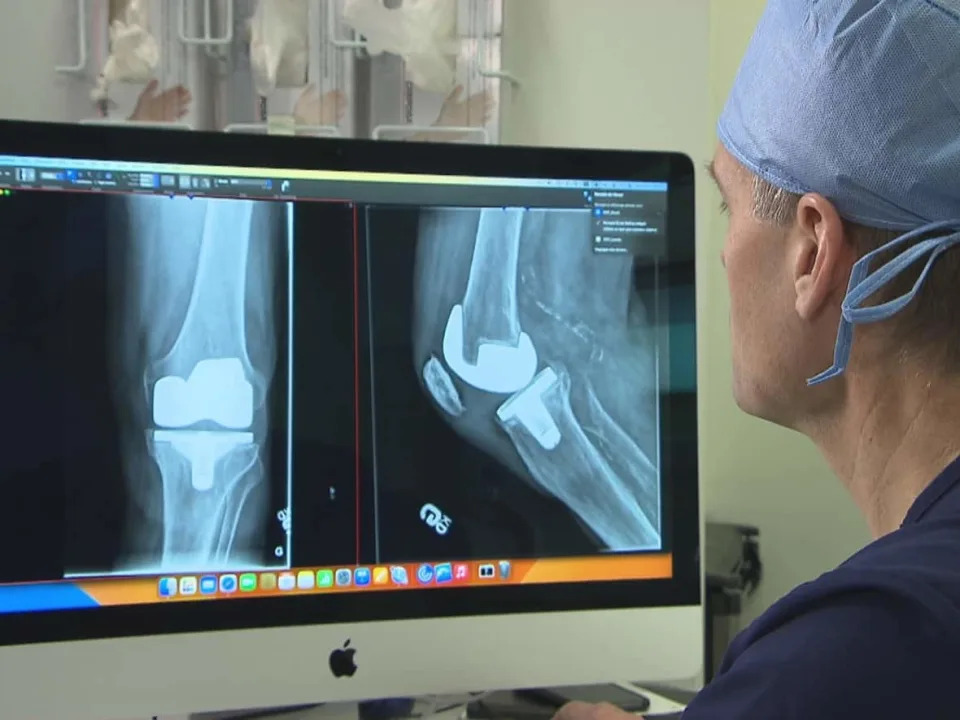
A doctor studies images of a patient's knee replacement surgery at a private medical facility in Laval, Que. The orthopedic surgeons behind a private group performing similar procedures at the Riverside campus of The Ottawa Hospital on weekends is defending the partnership. (Louis-Marie Philidor/CBC - image credit)
The doctors behind a private corporation that's performing joint replacement surgeries at the Riverside campus of The Ottawa Hospital (TOH) on Saturdays are defending the arrangement, which some critics view as another step toward the creeping privatization of Ontario's health-care system.
As CBC News reported this week, Academic Orthopedic Surgical Associates of Ottawa Inc. (AOAO), a group led by eight Ottawa surgeons who all practise out of TOH, performed the first round of 10 surgeries at the Riverside on Feb. 25. AOAO was registered as a business in Ontario in December 2021.
As surgeons, we hear the distress, pain, and the limitations to the quality of life our patients are experiencing. - Academic Orthopedic Surgical Associates of Ottawa Inc.
CBC News first became aware of the partnership in January, but the hospital did not confirm it until Feb. 16, when it announced it was "working with [AOAO] to increase capacity for orthopedic procedures, such as hip and knee replacements" at the Riverside, where operating rooms were "previously unused on weekends."
The arrangement is "in line with the Ontario government's plan to expand surgical capacity," according to the announcement.
Advocates and experts interviewed by CBC are viewing the partnership between TOH and AOAO in a different light, however. Some are asking why, since they rely on existing medical staff and hospital facilities, the surgeries aren't being performed under the existing public health-care structure.
"Why not use what you already have instead of taking this step toward privatization?" asked Rachel Muir, a registered nurse and the Ontario Nurses' Association's (ONA) bargaining unit president at TOH.
'The need to act is now'
According to a statement issued Thursday evening by TOH on behalf of AOAO, the surgeons' primary motivation in introducing this "new model of care" is relieving the existing backlog in access to orthopedic procedures that has left many patients waiting too long for surgery.
"This, combined with the growth expected in the future, means we need to find new solutions to ensure patients get the care they need. As surgeons, we hear the distress, pain, and the limitations to the quality of life our patients are experiencing. The need to act is now to respond to these patient concerns," according to the statement.
"Working with The Ottawa Hospital will allow us to strengthen access, quality, and service delivery for patients requiring orthopedic care across the region."

Nicole Beswitherick/CBC
According to the statement, AOAO is renting the operating rooms at the Riverside, but "has purchased its own equipment to perform these surgeries."
The statement does not specify how much AOAO is paying to rent the surgical space, nor what equipment it provides. AOAO later clarified that its surgeons provide "all instruments and equipment required to perform a hip or knee replacement," but uses the hospital's existing infrastructure such as operating room lights.
Anyone undergoing surgery is a registered TOH patient and "all services are billed through OHIP, as per standard practice," according to the statement, which describes the arrangement as "a cost-recovery model."
Surgical staff including registered nurses, registered practical nurses and clerical staff who volunteer to work the 10-hour Saturday shifts are being offered a per diem by AOAO that's roughly double what they'd earn for a regular eight-hour hospital shift, however they're responsible for their own insurance, CBC News has learned.
Minister defends partnership, applauds TOH
According to AOAO, the group includes 26 orthopedic surgeons. The Ontario Business Registry lists eight surgeons as "active directors."
CBC News has made numerous attempts to contact the surgeon listed as chair of the group, and on Thursday attempted to contact the other seven directors, all of whom practise out of TOH and most of whom are also affiliated with the University of Ottawa. Until Thursday's statement, the group had not commented publicly.
CBC News requested an interview Friday with the hospital's president and CEO Cameron Love, but was told he's unavailable.
A spokesperson for Ontario Health Minister Sylvia Jones also turned down an interview request on Friday. On Thursday, Jones's office issued a statement lauding TOH for "taking innovative action to eliminate the joint replacement surgical backlog and reduce patient wait times so more Ontarians can receive the care they need, closer to home."
In response to an access to information request from CBC News, the ministry said last month it had no records regarding the partnership between TOH and AOAO.
At Queen's Park on Thursday, Ottawa Centre MPP Joel Harden questioned Jones about the partnership.
"Will this government get public operating rooms fully up and running for everyone?" asked Harden, who characterized the arrangement to lease the publicly funded facilities to a private corporation as "selling them off or renting them out."
"I can tell you, there are some innovative models that are happening in the province of Ontario that are leading to successes," Jones replied. "It is a good news story, and we will continue to invest in those innovative models."
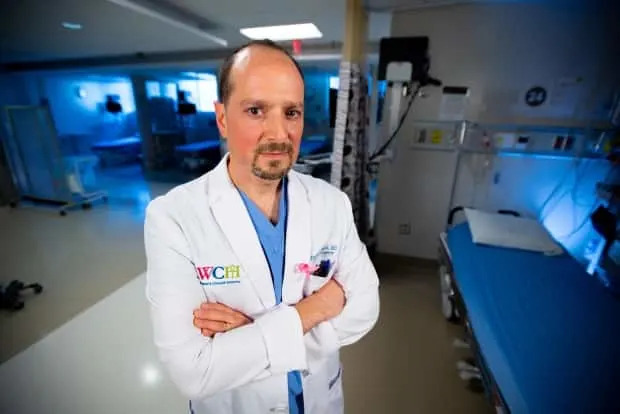
Craig Chivers/CBC
Use existing resources, surgeon urges
Dr. David Urbach, head of the department of surgery at Women's College Hospital in Toronto and professor of surgery and health policy, management and evaluation at the University of Toronto, agrees that Ontario's capacity to provide joint replacement surgeries is insufficient to meet the current demand.
"That is why many patients are suffering in pain waiting too long for surgery," said Urbach.
However, he believes that could be solved with proper funding and planning, and by introducing a centralized "single-entry" referral system for patients to avoid bottlenecks.
"There is no reason why additional surgeries could not be done in Ontario public hospitals," he said. "There are many operating rooms in Ontario hospitals that are unused — but could be used — due to lack of funding and staffing, especially nurses.
"From a business and quality of care perspective, it would be a much better strategy for Ontario to maximize delivery of surgery in our existing public hospitals."
The Toronto Star, quoting a retired Ministry of Health lawyer, reported on Thursday that under Section 4 of Ontario's Public Hospitals Act, no land, building or other premises belonging to a hospital can be sold, leased or mortgaged without the minister's approval.
On Thursday, the ministry told CBC that because the operating rooms belong to TOH, and the procedures provided in them are insured hospital services, the hospital does not require the minister's approval for uses such as the current partnership with AOAO.
Through TOH, CBC News has also asked AOAO whether it's charging a 50 per cent premium for weekend surgeries provided under OHIP as part of its "standard practice" mentioned earlier.

















